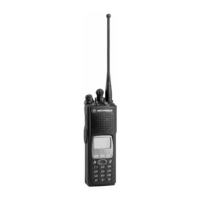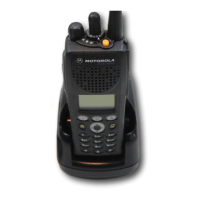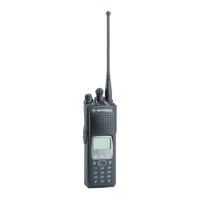xv
User Safety, Training,
and General Information ➠
READ THIS IMPORTANT INFORMATION ON SAFE AND EFFICIENT
OPERATION BEFORE USING YOUR MOTOROLA HANDHELD PORTABLE
TWO-WAY RADIO
The information provided in this document supersedes the general safety
information contained in user guides published prior to June 2001. For
information regarding radio use in a hazardous atmosphere please refer to the
Factory Mutual (FM) Approval Manual Supplement or Instruction Card, which
is included with radio models that offer this capability.
Compliance
with RF Energy
Exposure
Standards
Your Motorola two-way radio is designed and tested to comply with a number
of national and international standards and guidelines (listed below)
regarding human exposure to radio frequency electromagnetic energy. This
radio complies with the IEEE (FCC) and ICNIRP exposure limits for
occupational/controlled RF exposure environment at duty cycles of up to 50%
talk-50% listen and should be used for occupational use only. In terms of
measuring RF energy for compliance with the FCC exposure guidelines, your
radio radiates measurable RF energy only while it is transmitting (during
talking), not when it is receiving (listening) or in standby mode. Note that the
approved, supplied batteries for this radio are rated for a 5-5-90 duty cycle (5%
talk-5% listen - 90% standby), even though this radio complies with the FCC
occupational exposure limits at duty cycles of up to 50% talk.
Your Motorola two-way radio complies with the following RF energy
exposure standards and guidelines:
• United States Federal Communications Commission, Code of Federal
Regulations; 47CFR part 2 sub-part J
• American National Standards Institute (ANSI) / Institute of Electrical
and Electronic Engineers (IEEE) C95. 1-1992
• Institute of Electrical and Electronic Engineers (IEEE) C95.1-1999
Edition
• International Commission on Non-Ionizing Radiation Protection
(ICNIRP) 1998
• Ministry of Health (Canada) Safety Code 6. Limits of Human Exposure
to Radiofrequency Electromagnetic Fields in the Frequency Range from
3 kHz to 300 GHz, 1999
• Australian Communications Authority Radiocommunications
(Electromagnetic Radiation - Human Exposure) Standard 1999
(applicable to wireless phones only)

